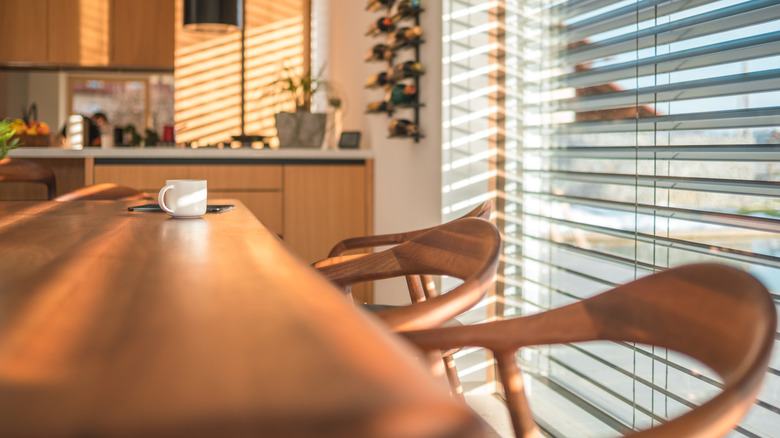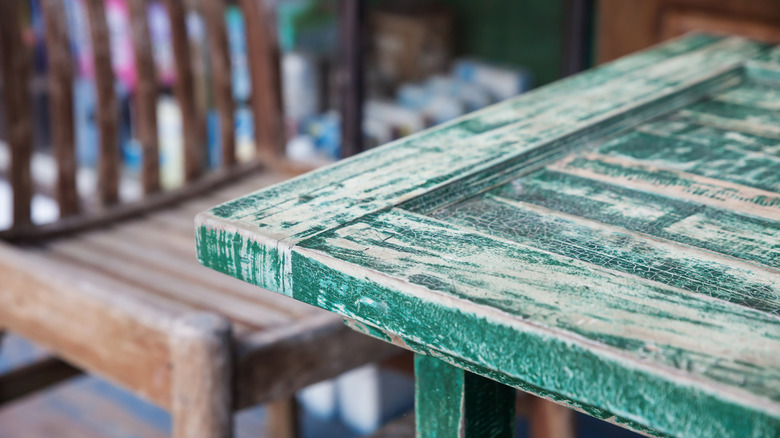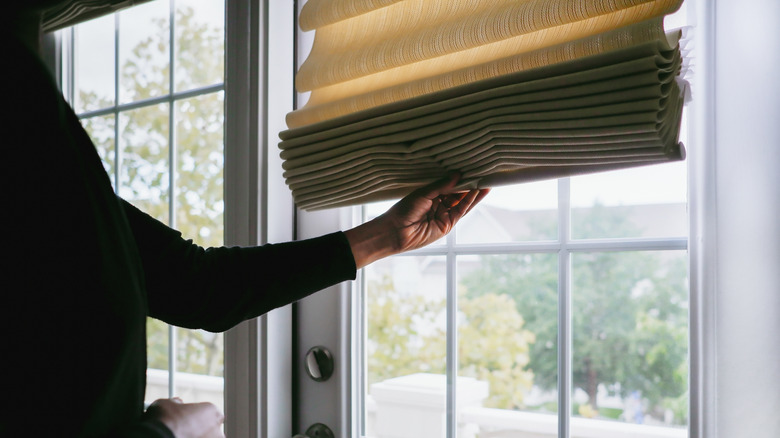The Unexpected Reason Your Wooden Furniture Is Discolored (& What To Do About It)
We may receive a commission on purchases made from links.
It usually starts with a slight patch, barely noticeable at first. You walk past your bookshelf or dining table one day and wonder if that lighter patch was always there. Maybe you chalk it up to lighting, or age, or the cleaner you used. But slowly, your beautiful wooden furniture begins to look faded. And not in the charming, vintage way. The culprit here isn't your furniture polish or a careless coffee spill, but something far more ordinary: sunlight. Yep, those beautiful sunbeams streaming through your windows might be damaging your furniture more than you think. Over time, direct exposure to sunlight causes wood to discolor, fade, or even darken unevenly, depending on the type of finish and wood. Fortunately, you can absolutely do something about it before it gets worse. But to fix it, you first need to understand why it happens.
We're often told that natural light is a home's best feature. And it is, until it starts warping your walnut dresser. Most people don't realize that wood is photosensitive, meaning it reacts to UV rays just like your skin does. So while you might slather on sunscreen before heading out, your furniture just sits there, unprotected, day after day.
The hidden impact of sun exposure on wood furniture
While wooden furniture is the warm trend that will never go out of style, at its core, it's an organic material. Put simply, it's vulnerable to its environment, especially sunlight. The main issue lies in ultraviolet (UV) radiation. Just like UV rays break down the proteins in our skin, they break down the chemical bonds in wood's lignin, the natural polymer that gives wood its strength and color. As UV exposure increases, lignin deteriorates, causing the wood to fade or take on yellow or silver tones, depending on the type of wood. And this doesn't happen only through direct sunlight hitting the surface. UVA rays can filter through glass windows, too. Likewise, sheer curtains may limit UV exposure, but they don't completely protect against harmful UV rays. Indirect sunlight can therefore be just as harmful in the long run. It's slower, but constant nonetheless.
Then there's the heat. Prolonged exposure to sunlight affects the structure of wood. The sun's heat causes wood to expand and contract. This thermal movement can lead to cracks or warping. That elegant oak coffee table or teak cabinet may have once felt like an investment in durability, but without protection from UV and heat, it's fighting a battle against nature every day.
Simple tips to prevent sunlight damage to wood furniture
One of the simplest, most effective steps is installing window treatments. Blinds and UV-filtering window films can cut down the amount of harmful rays entering your space. If your home gets strong daylight, especially during peak hours, closing blinds when you're away can slow fading dramatically.
Another smart move is to change things up now and then. Rearranging your furniture every few months helps even out exposure, so one side of your dining table isn't constantly taking the hit while the other stays pristine. For longer-term protection, consider using a UV-protective wood polish like the Saicos UV Protective Wood Finish. It adds a protective barrier without altering the natural look of your piece. And finally, don't underestimate regular cleaning. Dusting your furniture often gives you a chance to spot early signs of discoloration before they worsen. A little attention goes a long way in keeping your wood pieces looking even-toned and timeless.


